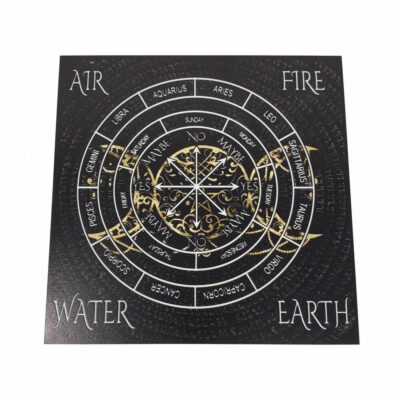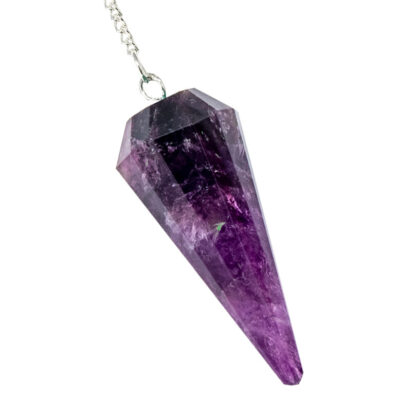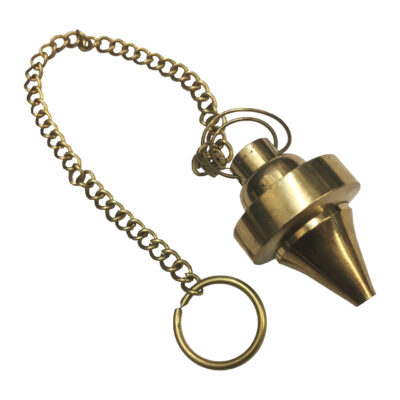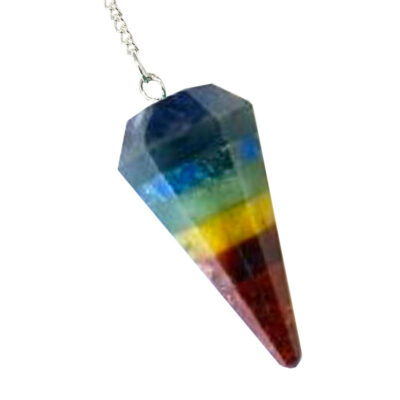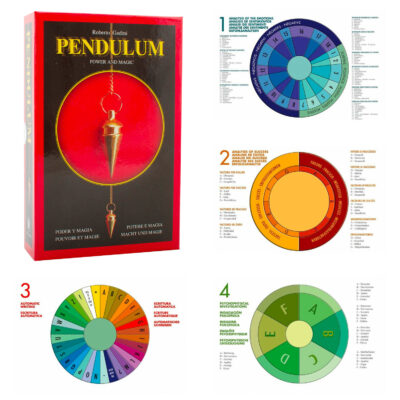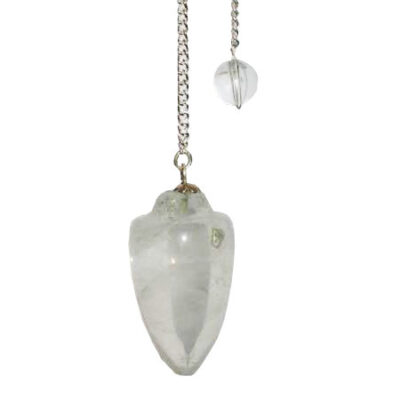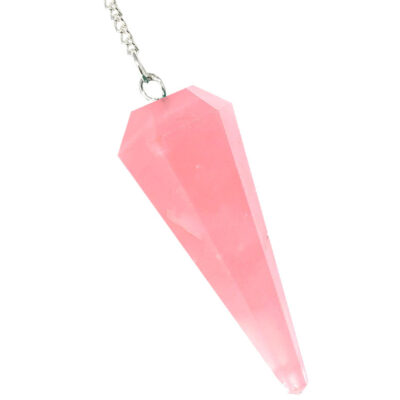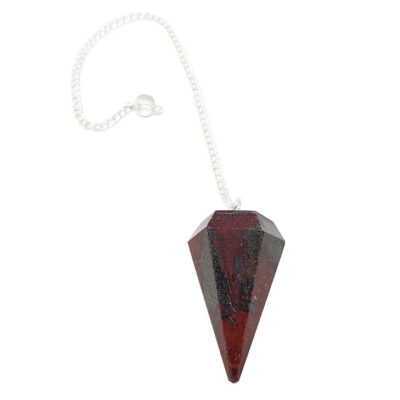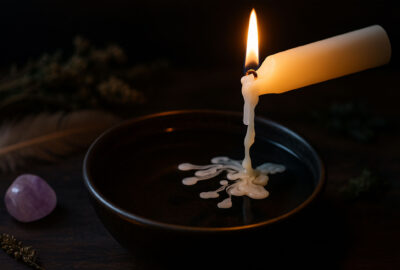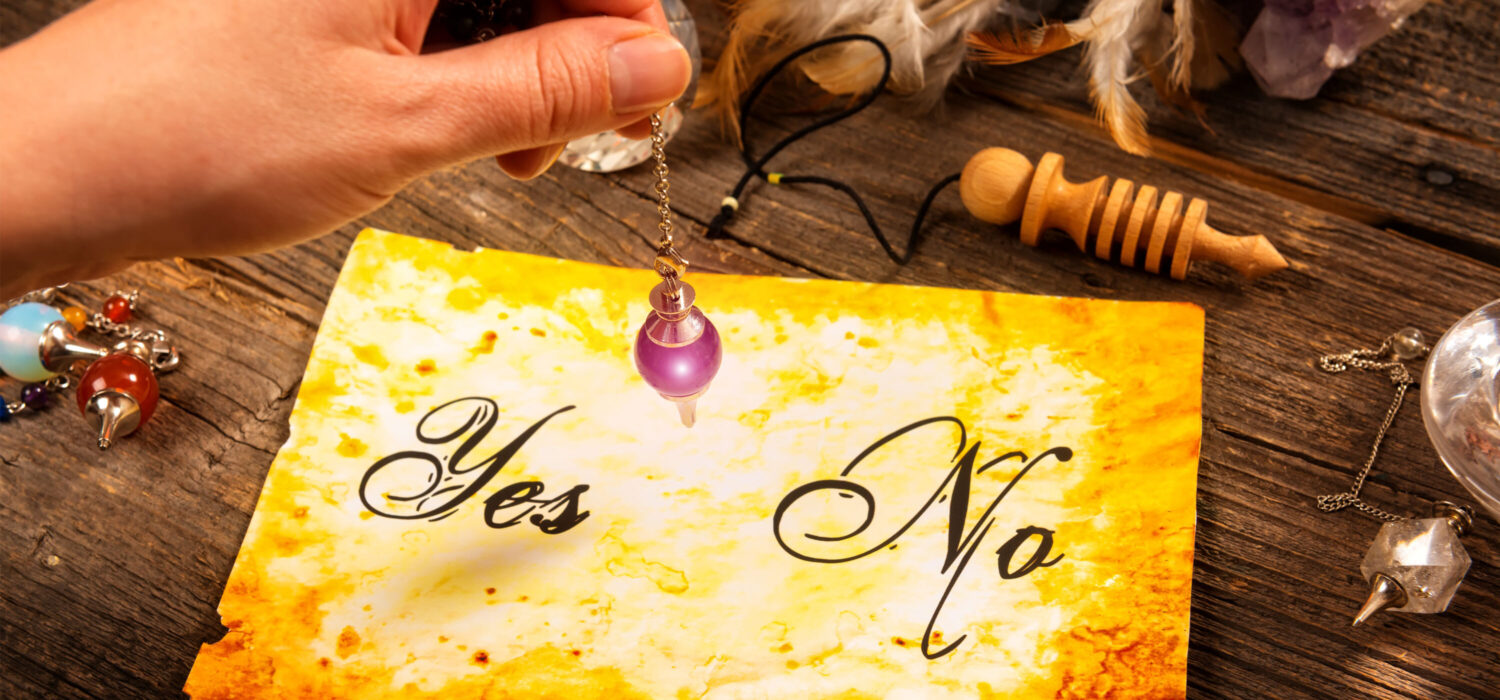
Pendulum Divination: How to Unlock Spiritual Guidance
Pendulums may look simple, but in spiritual practice, they are among the most versatile divination tools. With nothing more than a weighted chain and your focused intent, a pendulum can help you uncover hidden truths, balance your chakras, connect with spiritual guides, and receive direct answers to your questions. What seems like a small swing of energy can reveal deep layers of insight.
Whether you’re new to pendulum work or looking to strengthen your practice, this guide will walk you through its history, uses, and techniques while grounding you in practical ways to integrate pendulum divination into your rituals.
What Is Pendulum Divination?
A pendulum is any weighted object suspended from a chain or string that moves in response to subtle energy. By asking clear questions, you can interpret the direction and pattern of its swings as “yes,” “no,” or more complex answers. Practitioners also use pendulums to locate blocked energy in the body, detect spiritual imbalances, or even communicate with ancestors and guides.
Because pendulums respond to your own energy and environment, many practitioners consider them extensions of the subconscious mind and spirit. Over time, the pendulum becomes attuned to your vibration, making your readings more accurate and personal.
A Brief History of Pendulum Divination
Pendulum use stretches back through human history, originally linked to dowsing, a folk practice where tools like Y‑shaped sticks or suspended weights were believed to locate water, minerals, or buried objects. This curious approach to seeking the unseen appears in ancient texts and has persisted as part of various cultural traditions.
Spiritually, pendulums gained prominence during the rise of 19th‑century Spiritualism, used by mediums and seekers to access subconscious or spiritual guidance. Over time, pendulum divination evolved from a mystery‑wrapped folk art into a trusted way to listen inward.
From a scientific perspective, many pendulum movements can be explained through the ideomotor effect, where subtle, unconscious physical motions are triggered by mental suggestion or intent. This mechanism was formally described by early neuroscientists and physiologists, including William Carpenter in the mid‑1800s, and is now well‑documented in psychological studies.
Today’s pendulum practitioners embrace this blend of historic tradition and modern awareness. The pendulum is no longer just a mystical relic; it is a bridge between the rational and the spiritual, a tool that harmonizes intuition with intention.
Choosing the Right Pendulum
Pendulums can be made from crystal, metal, wood, or glass. The material often shapes its spiritual resonance:
- Amethyst – spirituality, clarity, and intuition.
- Rose Quartz – love and relationships.
- Clear Quartz – all-purpose clarity and amplification.
- Brass or Copper – grounding and stability.
- Wood – natural, balanced energy flow.
When selecting a pendulum, hold it in your hand. Does it feel warm, heavy, or calming? Trust your intuition—your spirit will recognize the tool meant for you.
Cleansing and Charging Your Pendulum
Before beginning any spiritual work, your pendulum should be energetically cleared. You can pass it through incense smoke, leave it under the moonlight, or use sound vibrations from a singing bowl. If your pendulum is made of crystal, it can also benefit from traditional methods used for charging and cleansing crystals, which help align it with your intent.
Some practitioners keep their pendulum stored in a silk pouch or on an altar when not in use, treating it as a sacred tool rather than an everyday object.
How to Use a Pendulum
Establishing Yes and No
To begin, hold your pendulum so it hangs freely. Ask it to show you a “yes” response, then wait and observe the motion—perhaps a forward swing or a clockwise circle. Then ask for a “no” and watch again. Once these baseline responses are set, you can move into deeper questioning.
Detecting Energy Blocks
Pendulums can also be used for energy healing. For example, when held over chakra points, the motion of the pendulum can reveal imbalances. Many practitioners use them alongside practices for healing the chakras to identify and release stagnant energy in the root, sacral, or solar plexus centers.
Divination and Spirit Communication
Pendulums work beautifully as divination tools. Some use them in combination with a pendulum board or divination grid, while others prefer to let them swing freely over a table. Unlike tarot cards or runes, pendulum answers are immediate, making them ideal for quick confirmations. If you’re interested in broadening your toolkit, many practitioners combine pendulum readings with other divination tools like scrying, tarot, or crystal balls to receive layered messages.
For a deeper dive into advanced pendulum practices, you can also explore different ways to use pendulums, including healing sessions and room clearings.
Using a Pendulum with a Divination Board
One of the most intuitive and elegant ways to deepen your pendulum practice is by using it with a board designed for guidance, like the beautifully crafted Triple Moon Pendulum / Altar Board. This 8-inch wooden grid features the phases of the moon, the four elements, zodiac signs, days of the week, and clear divination prompts such as yes, no, and maybe.
When using a pendulum alone, you normally begin by calibrating—asking it to show you “yes” or “no” so you can recognize its movements. With a divination board, however, you allow the pendulum to swing freely over the center and then read the answer where it points. The marked responses on the board give you instant clarity without needing to establish personal motion codes.
For example, if you ask a question and the pendulum begins to swing toward Yes, the board confirms it visually. If it moves outward toward a zodiac sign, element, or day of the week, you can interpret that as added context for your reading. Some practitioners still choose to do a quick calibration before starting, simply as an energetic warm-up, but the board itself carries the guidance.
Working with a pendulum board transforms your practice into a layered dialogue with spirit and intuition. The visual symbols anchor your reading within cosmic cycles and elemental forces, creating not just answers, but insights enriched by sacred symbolism.
Ritual Applications
Pendulums can be woven into many ritual practices, serving as both guides and energetic tools. Common applications include:
Room Cleansing: A black tourmaline pendulum can detect heavy or stagnant energy in your home. If its swing becomes erratic, it may signal the need for a cleansing ritual.
Healing Work: Pendulums help confirm whether energy healing has cleared blockages in the body. A steady, smooth swing usually indicates restored flow.
Chakra Balancing: When held over each energy center, pendulums reveal blockages and can help realign the chakras. Many practitioners enhance this work with chakra stones, incense, or essential oils for deeper balance.
Spirit and Ancestral Communication: In ancestor veneration or spirit work, pendulums act as a simple channel for yes/no dialogue. They are often paired with offerings, candles, and prayers at the altar.
Spell Crafting Confirmation: Before beginning a ritual, a pendulum can be asked whether the timing, ingredients, or space are aligned with your intention. This ensures you begin your work in harmony with spiritual energies.
Post-Spell Divination: After completing a ritual, pendulums provide quick insight into whether the spell is set in motion and how its energy is unfolding.
By integrating pendulum divination into cleansing, healing, or spellwork, you create a sacred feedback loop. The pendulum becomes a compass, guiding your next steps with clarity, balance, and confidence.
What If My Pendulum Doesn’t Work?
Even experienced practitioners sometimes find that their pendulum isn’t responding as expected. If your readings feel unclear, inconsistent, or “off,” it doesn’t necessarily mean the pendulum has stopped working; it often means something in the environment or your own energy needs attention.
Some common reasons include:
Misinterpreting movements: Make sure you’ve correctly established what “yes,” “no,” and “maybe” look like for your pendulum before asking complex questions.
Low energy or fatigue: If you’re tired, stressed, or emotionally unsettled, your energy may not be stable enough to get clear results.
Environmental interference: Being too close to electronic devices, high-frequency equipment, or even strong magnets can affect a pendulum’s motion.
Unclear questions: Pendulums respond best to simple, direct, and specific questions. Avoid double negatives or vague phrasing.
Lack of focus: Sometimes you may need to pause, breathe, and wait a few moments before the pendulum begins to move clearly.
Incompatibility: Not every pendulum resonates with every practitioner. If your tool consistently resists, try working with a different material, like crystal or wood, to see if it feels more aligned with your energy.
The key is to stay relaxed and patient. Approach pendulum work with an open mind, and permit yourself to practice without judgment. Over time, you’ll strengthen your sensitivity and find your pendulum becomes a reliable partner in divination.
Frequently Asked Questions
Do pendulums really work, or is it just chance?
Pendulums respond to energy: both your own and the environment’s. Many believe their accuracy comes from a combination of intuition, spiritual guidance, and the subconscious mind.
Can I use any object as a pendulum?
Yes. While crystal and metal pendulums are popular, any small weighted object on a chain or string can be used, provided it feels aligned with your energy.
How often should I cleanse my pendulum?
Cleanse your pendulum before each session, especially if you’ve used it for healing or divination with others.
What questions can I ask a pendulum?
Pendulums work best with yes/no questions, but advanced users combine them with divination boards to ask more layered questions.
Can pendulums replace other divination tools?
Not exactly, they complement them. Pendulums provide direct, quick answers, while tools like tarot and scrying offer broader narratives.
Is pendulum divination safe?
Yes. As long as you remain grounded and set clear intentions, pendulum divination is a safe, intuitive practice accessible to anyone.
Let the Pendulum Guide You
Pendulum divination is more than just a spiritual tool; it’s a conversation between your intuition, your energy, and the unseen world. With patience and practice, the pendulum becomes a trusted ally, offering clarity when the path feels uncertain and confirming truths that your spirit already knows.
When the pendulum swings, it is not just moving with energy; it is moving with you.
